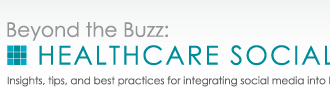Google+, Google’s new social network, currently in Beta, comes at a perfect time for Healthcare and Pharma.
Healthcare and Pharma firms have been volleying with the idea of social for a while now, dipping their toes in the water at Facebook, creating their own communities, and working with foundations online.
There are always lots of questions. Do they want to go there? Will they be accepted if they do?
Google offers a number of great services that can play a key role in healthcare marketing. Google Photos is one huge example. However, Google+ is arguably even more important.
I think Google+ is a great opportunity for healthcare and pharma to get in on the ground floor.
In fact, Google is working on a separate and specific option for businesses that includes deep analytics and the ability to connect to products like AdWords.
Google+ product manager Christian Oestlien says, “The business experience Google is creating should far exceed the consumer profile in terms of its usefulness to businesses.”
Many pharmas already use Google apps. Google only has one license fee for all its tools and apps, whereas Microsoft charges per software package-one for Office, one for Exchange, etc.
The most exciting thing about using the new Google+ social network is the availability of all the Google tools now being incorporated into its platform.
The functionality of the tools will become more interesting and accessible as people in the G+ network try them and motivate others to use them.
In an effort to unify the brand names, Blogger and Picasa are being renamed Google Blogs and Google Photos.
Pharma’s business needs
It is hard to believe that Google Health is off the table (as of January 2012), especially if Google wants the pharmaceutical industry to incorporate Google+ into its online health-related business models. Why wouldn’t it?
It’s logical to assume that current Google tools can be adapted to pharma business needs.
Google maps are already feature-ful, but now Google invites local experts to make their own maps in Google Mapmaker.
For pharma, this may be a great way to show places where patients can seek assistance.
Pharma can sponsor patient mapmakers to show disease-specific resources.
Maps could show airport check-in locations for chronically ill and acute care travelers. If the need arises, the traveler can click on the map and make an appointment.
Google Places can integrate with the maps, letting us know where best care practices exist.
Imagine sharing three-dimensional designs of our DNA (presented through Google Sketchup) as our whole genomes become accessible through cloud computing; all this synchronized with Google Chrome.
Pharma could incorporate the features of Google Offers (similar to Groupon) as a way to incentivize people to keep their health a focus as they travel-giving coupons for restaurants with healthy menu items, for over the counter products, and for exercise facilities.
All of these tools and more are poised to synchronize with the G+ network features. The tools become the gears of the social engines.
Community clusters
As for Google+ itself, intuitive and attractive features are built in. The first being Circles, which are the people groupings.
Circles can be tailor-made. Members can be dropped and dragged into appropriate circles, allowing for logical and functional privacy.
When Google releases its G+ business model, it is reasonable to expect Circles will address pharmas requirement to cluster their community members: employees, scientists, researchers, physicians, patient groups and more.
Separate messages could be sent to specific circles, perhaps even with an enhanced security feature to prevent retransmission.
I also love the HangOut feature of Google+. This is for gathering in general.
It’s well suited for people who have a chronic disease like cystic fibrosis and who can never be together for the fear of transmitting deadly bacteria. Imagine, patients can “hang out,” be silly or serious together in real time.
The best part is HangOut works with GoogleTranslate, allowing members who speak different languages to “hang out” and share knowledge from all over the world.
The Sparks feature allows members to share information about a common interest. Pharmas may want to tell a circle of physicians about a new product or a circle of patients about the latest appropriate app.
Sparks can overlay information on different circles (member groups).
With all the tools in place, it will be interesting to see how G+ evolves. There are still bugs as engineers move everything together.
They are working with a sophisticated bunch of early users in the Beta version, including Mark Zuckerberg, the creator of Facebook!
The good news is Google engineers are working to meet the very different needs of the business community.
I can’t help thinking that with all the tools becoming more like cogs, having the ability to mix and match so many gears and circles with sparks flying and instant translation, a Google Global Village is coming into focus.
Patient advocate Jeanne Barnett founded the e-patient community at cysticfibrosis.com in 1996. For more information, see Medrise.com. For more from Jeanne Barnett, see ‘Future pharma: The home as healthcare center‘ and ‘Patient power: From technology to treatments‘.
For more on patients and technology, join the sector’s key players at Patient Adherence USA on October 24-25 in Philadelphia and Mobile Innovation for Pharma on December 1-2 in London.
For more on how pharma can make the most of new technologies, check out eyeforpharma’s Future Pharma special report.
For all the latest business analysis and insight for the pharma industry, sign up to eyeforpharma’s newsletters.







